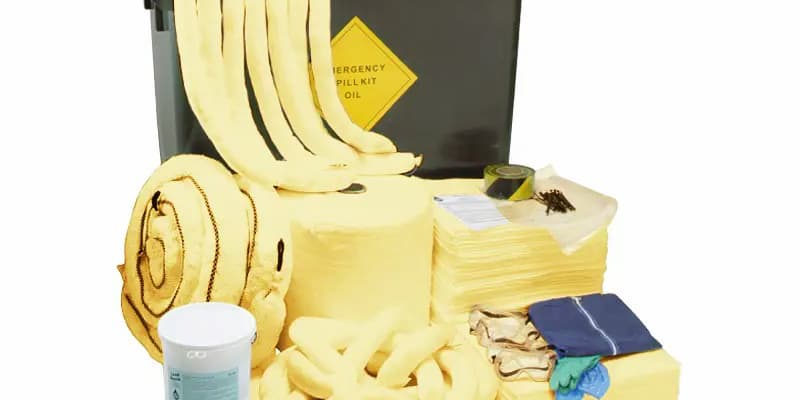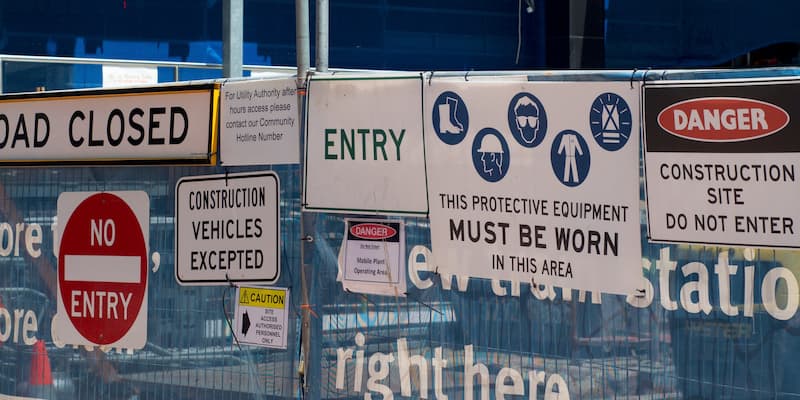
By Mark Smith 17/07/2024
Under: Site Set Up / Incident ResponseThe best spill response: How to prepare your site
Workplace spills are an everyday occurrence. However, depending on what is spilt, employees can be exposed to chemicals that might pose significant health and safety hazards. When a spill does occur, employees must be prepared and deal with the spill quickly and safely.
Enfield Safety offers free-of-charge on-site surveys, available nationwide, which provide you with a written assessment of your requirements to comply with current legislation. Phone our friendly sales team to book an appointment today on: 0333 003 5710.
Spill Prevention
The best way to deal with a spill on-site is to avoid having one in the first place. This requires the implementation of safe procedures for storing, transferring, handling, using and disposing of liquids and chemicals. Bear in mind that certain chemicals will require different procedures. For example, some chemicals should not be exposed to excessive heat. Your procedures must be tailored to the specific liquids, chemicals and hazards on your site. These should be assessed in your site safety plan and risk assessment stages.
Chemical Storage
Make use of specially designed storage solutions with inbuilt spill protection, such as: a Drum Pallet Sump, Drum Stacker Unit, Hazard Hut or Bulk Container Pallet. These systems include spill trays which contain a spill should one occur. Transportable options, like this Mobile Drum Trolley, are a good idea if chemicals need to be mobile.
Spill Control Training
All those working in (or managing) an area where team members handle or come into close proximity with chemicals need to receive adequate training. This training should cover safe working procedures as well as what to do in the event of a spill.
Dealing with a Spill
1) Assess and Communicate
Firstly, assess the situation to determine the level of danger – does the area need to be evacuated? Do the emergency services need to be called? Inform all operatives in the area and evacuate if necessary.
If no immediate threat to life exists and it is safe to remain near the spill, further care should be taken to determine the nature of the spill. This includes what the liquid or chemical is, how much material was spilt, where the spill occurred, the amount of ventilation in the area and the temperature of the surface, the immediate area and the liquid itself. Appropriate PPE should be worn to conduct an assessment of the spill. Browse our spill kits.
2) Control and Contain
Anyone attempting to control and contain a spill must wear appropriate personal protective equipment. Many larger spill kits contain gloves, googles, coveralls, overshoes and respirators. Check your kit and purchase additional chemical protection PPE if required.
Take any possible measures to stop the spill from becoming worse. This may involve: closing a valve, plugging a leak or righting a fallen container. In addition, use a spill kit to contain the spill and protect the surrounding environment. Spill kits come in many sizes and are designed to tackle specific spills: make sure you have appropriate spill kits on site that match your hazards.
Try to prevent the spill from spreading to drains, or other places that may allow chemicals to flow into environmentally sensitive areas. If needed, protect drains by using a drain block.
3) Clean and Decontaminate
Once the spill has been safely assessed and contained, work can begin on cleaning and decontaminating the spill site. Use absorbent materials (find them in your spill kit) to soak up the remainder of the spill and dispose of them appropriately.
After removing the bulk of the spill, clean all surfaces and other equipment that has been in contact with spillage carefully.
4) Evaluate and Report
After a spill, efforts must be made to evaluate why the spill occurred and what can be done in the future to avoid another spill. In some cases, particularly those involving chemicals, you may be required to submit a spill report to the relevant authorities.
Ready to discuss your spill safety requirements with the experts? Talk to the Enfield Safety team today on: 0333 003 5710.
Enfield Safety – no one works harder to bring you health, safety and welfare products at the right price, on time, every time.

.jpg)
